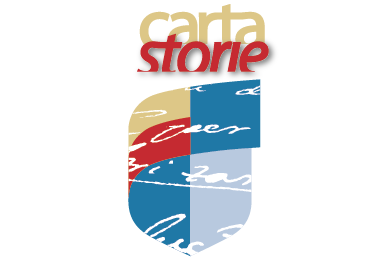Caravaggio; the seven works and the Radolovich altarpiece
It is January, 1607; Caravaggio is an emerging but complicated artist, and thanks to his talent alone, he broke into the Neapolitan art scene and immediately gained important commissions. His magnificent painting of the Seven Works of Mercy had just been completed, and he was known as the most important artist among the more innovative cultural circles The elaborate and complex painting had guaranteed him a large sum of money – four hundred ducats! – and it would find its home at the Pio Monte della Misericordia chapel. The documents from the Historical Archives of the Banco di Napoli have allowed us to reconstruct, in detail, the moment when the young Lombard painter received his substantial reward.
Tiberio del Pezzo, an economist at the Pio Monte, gives Caravaggio a cheque which the banker signs personally. A small piece of paper, with just a few chosen words written on it. It is a cheque containing no more than the information necessary to communicate why the money is being paid, which will allow the painter to withdraw 370 ducats in cash as payment for his work.
Banco della Pietà January 9, 1607. To Tiberio del Pezzo 370 ducats for Michelangelo da Caravaggio to pay off the total amount of 400 ducats, for the completion of a painting for the Monte della Misericordia. This final payment was arranged by Tiberio.
But the documents in the historical archives can tell us much more. There is a clue, a kind of mysterious trace, left by the scribes working at the Banco di Sant’Eligio in piazza Mercato: an unresolved enigma from the history of 17th century art.
Here’s how it went: A rich businessman from the Balkan mountain region commissions a large painting by Michelangelo Caravaggio. The entire scene to be painted is described in these original documents, with all of the measurements written meticulously.
Banco di S. Eligio, bank copybook n. 31, October 6, 1606.
Payment order of two hundred ducats from Niccolò Rudolovich to Michelangelo Merisi da Caravaggio for a painting showing the Madonna with child between the Angels and Saints Dominic, Francis, Nicolas and Vitus.
For Niccolò Radolovich two hundred ducats, and from him to Michel’Angelo Caravaggio for the price of a Painting that must be finished and delivered before the end of next December, with a height of 13 2/3 palms and width of 8 ½ palms with the figures mentioned above, the image of the Madonna with the child in her arms surrounded by choirs of Angels and below Saint Dominic, and Saint Francis in the middle, with Saint Nicolas on his right and Saint Vitus on his left.
What happened to that painting? What was the destiny of the work portraying the figures of Saint Domenic and Saint Francis? Was the “Radolovich Altarpiece” ever completed? Perhaps it was never painted, perhaps it was destroyed during one of the many popular uprisings, or maybe it was cut up and sold in pieces. For now, the only ‘image’ we have of one of the first Neapolitan masterpieces by Caravaggio is described, in beautiful handwriting, in the volumes of the historical Archives of the Banco di Napoli.
